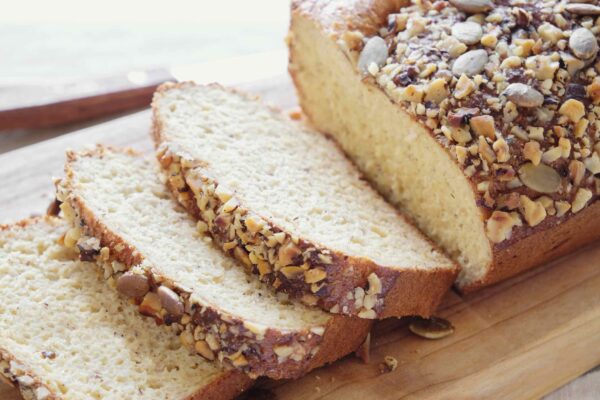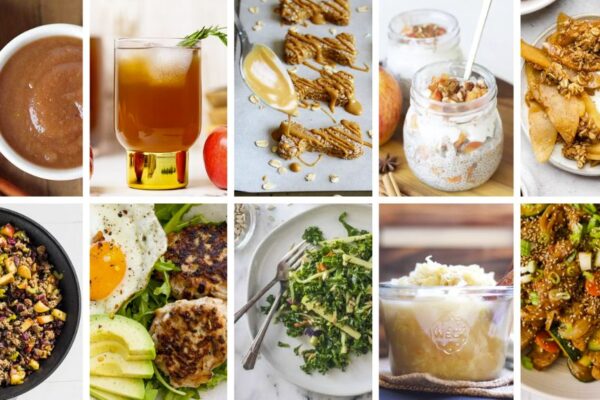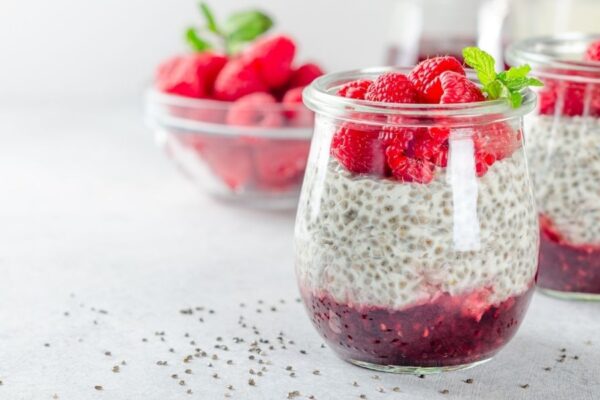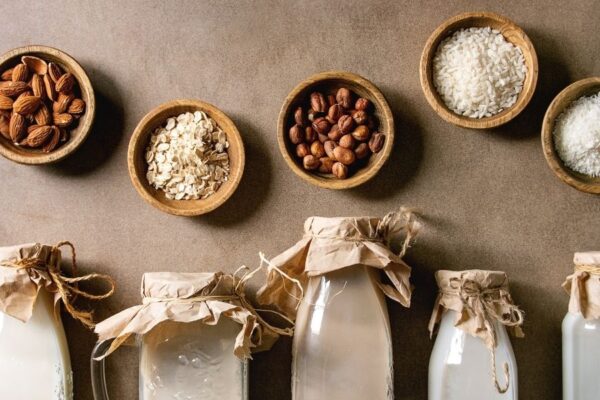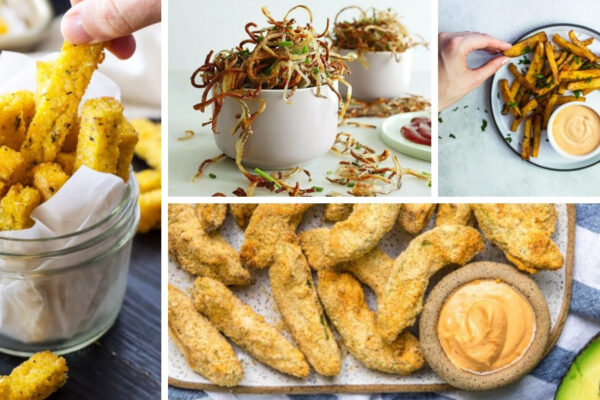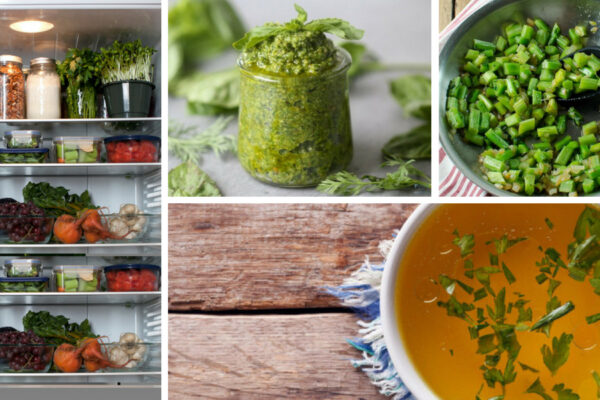Gluten-Free Flour Guide and Simple Substitution Reference
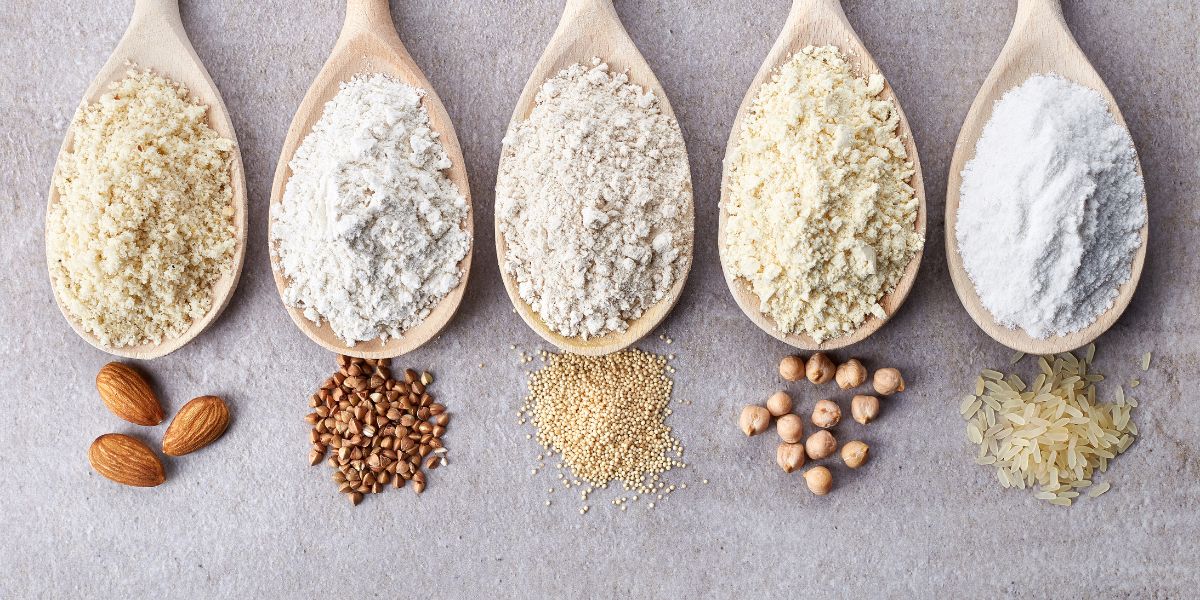
The world of gluten-free baking is both wonderful and challenging – the results can be incredibly delicious, but it can take some trial and error to discover the best gluten-free flour combinations and which flour to use and when. In the Culinary Nutrition Expert Program, which is entirely gluten-free, we have an entire module dedicated to gluten-free baking and sweet treats! In other words, gluten-free flours are important to culinary nutrition!
We’ve spent many years experimenting with both sweet and savory gluten-free baked goods (a tough job, we know) and have learned a lot along the way. Using this A to Z gluten-free flour guide, you can skip the flops and rock-hard gluten-free muffins and go straight to the scrumptiousness.
The most important thing to know about working with gluten-free flour options is this: you must blend multiple flours together for the best results. Using a singular gluten-free flour will result in those hockey puck cookies that no one wants to eat. So generally, when you are substituting a gluten-free flour for wheat flour, or a gluten-free flour for another gluten-free flour, you’ll need to play around a bit and see what works best for you.
Without further ado, here are some of our well-loved gluten-free flour options and the best way to use them.
gluten-free flour guide and substitution reference
Download your free *updated* Gluten-Free Flour Guide and build your own gluten-free flour blend (plus we share a few extra gluten-free recipes to get you started). ↓
Free Resource Library
Enjoy more than 40 downloadable guides, recipes, and resources.
Almond Flour
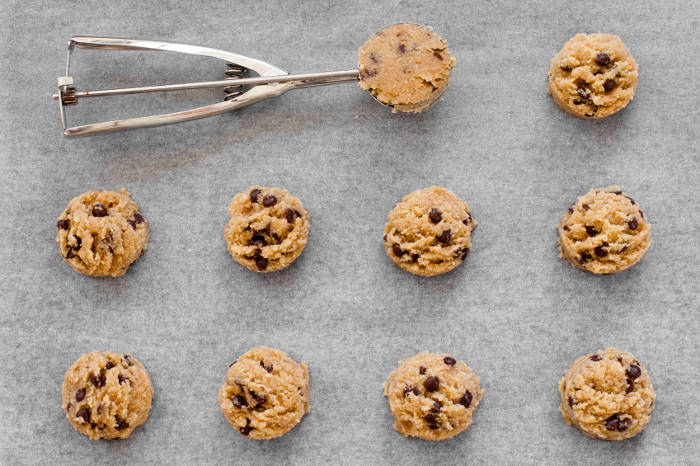
What is it?
Take raw, blanched almonds, grind them to a fine flour and you have almond flour. You can also buy milled almond flour, which is finer in texture, or save your almond pulp and blend it up into almond flour. This and other nut flours — such as hazelnut, walnut, pecan and seed flours — add protein, fibre and vibrant taste to grain-free and gluten-free baking.
Best for: Cookies, cakes, muffins, hearty crusts, pancakes, and crumble toppings. Heavily used in Paleo diet recipes.
How to substitute: Use up to 25% of nut flours in gluten-free flour mixes.
Recipe to Try: Grain-Free Almond Flour Cookies
Amaranth Flour
What is it?
The tiny whole grains that make a surprising breakfast cereal can also be ground into a fine flour. Amaranth is rich in protein and has a grassy, earthy taste.
Best for: Due its grassy flavour, use it in savory dishes like pizza dough.
How to substitute: Swap it 1:1 from glutenous flour
Recipe to Try: Amaranth Flour Crackers
Arrowroot Flour
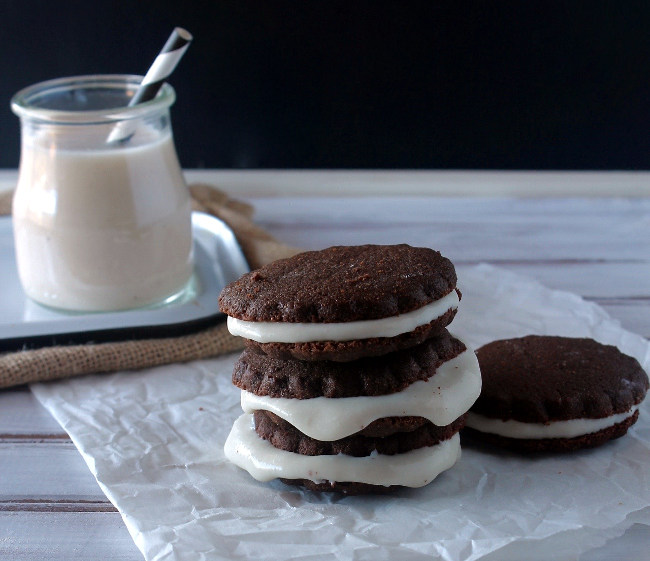
What is it?
Arrowroot flour is a fine flour that comes from the arrowroot plant (you may also see it labelled as arrowroot starch or arrowroot powder). It looks very similar to corn starch, potato starch and tapioca starch.
Best for: Use it as a thickener in place of corn, potato or tapioca starch. It’s also helpful when you need any kind of dough to stick together.
How to substitute: Substitute arrowroot flour 1:1 in place of corn, potato or tapioca starch. When using it in baking, aim to have no more than 20% arrowroot in your gluten-free flour mix.
Recipe to Try: Grain-Free Chocolate Sandwich Cookies
Bean Flours
What is it?
Dried beans can be ground into flour as easily as grains can. Chickpea flour — also known as garbanzo bean or ceci flour — is used for flatbread in the south of France. Lentil flour shows up in Indian cuisine. Fava beans become flour and show up in some commercial gluten-free baking mixes. They are all rich in protein and fibre.
Best for: You can use bean flours in both sweet and savory dishes, but use them in small doses as their flavour can be overpowering.
How to substitute: Use up to 25% of bean flours in gluten-free flour mixes.
Recipe to Try: The Best Banana Pancakes with Chickpea Flour
Buckwheat Flour
What is it?
Buckwheat flour is made from ground buckwheat. Has a rich, nutty flavour and a very high nutritional value, making it popular in many nations, especially in Asia. Buckwheat is the fruit of the buckwheat plant and has no relation to wheat or grasses – so it is a 100% gluten-free flour.
Best for: Muffins, cookies, pancakes, waffles and breads
How to substitute: Add up to 50% of buckwheat flour in your gluten-free flour mixes
Recipe to Try: Orange-Scented Buckwheat Chocolate Chip Cookies
Coconut Flour
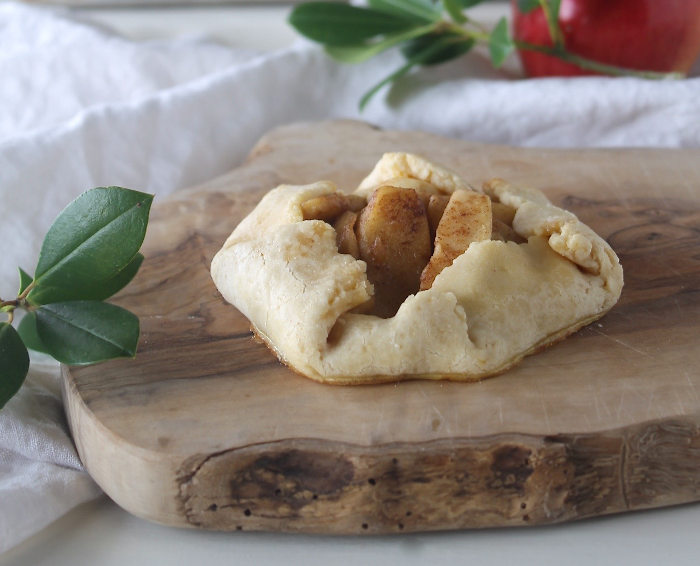
What is it?
This gluten-free flour is made from coconut that’s been dried and ground. It’s very dense, high in protein and it’s the most fibrous of all of the flours. That’s why you’ll need to add at least an extra 1/4 cup of liquid to your recipes when using it. It’s commonly used in Paleo diet recipes and pairs best with eggs – so it doesn’t always work in vegan recipes.
Best for: Things that don’t need to rise very much like pancakes, cookies, waffles and crusts
How to substitute: Coconut flour soaks up a lot of liquid, so use 1/4 cup of coconut flour in place of 1 cup glutenous flour (or another gluten-free flour). You’ll also need to add an extra 1/4 cup of liquid.
Recipe to Try: Mini Gluten-Free Apple Galettes
Millet Flour
What is it?
Mild and ever-so-slightly sweet, millet is an adaptable grain that is rich in magnesium, nature’s relaxant mineral. It soaks up the tastes of the foods surrounding it, making it a very neutral gluten-free flour to use. Millet flour lends a crumbly texture to breads and muffins and is the least allergenic of all the grains.
Best for: Breads, muffins, cookies, cakes, crusts
How to substitute: Use up to 25% of millet flour in your gluten-free flour mixes
Recipe to Try: Instant Ragi Dosas by Food Trails
Oat Flour
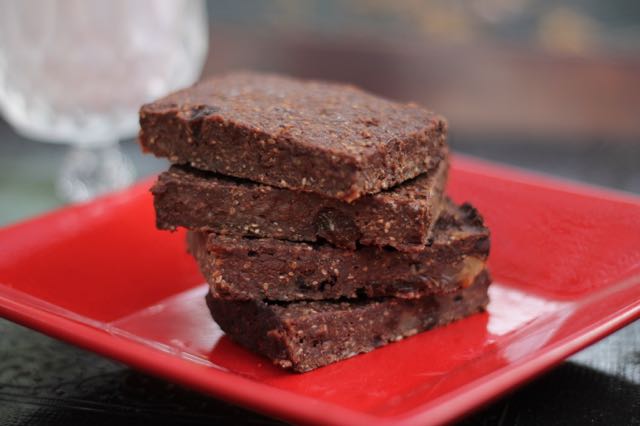
What is it?
Oat flour is simply made by grinding whole grain oats in the food processor or blender. It’s rich in soluble fibre and it’s great for balancing blood sugar levels. One thing you need to ensure if using oat flour is that it’s 100% gluten-free. While oats are naturally gluten-free, they are often planted and processed alongside wheat, leading to cross contamination. Buy certified gluten-free oats for grinding into flour, or certified gluten-free oat flour.
Best for: Breads, muffins, cookies, cakes, crusts, granola, fruit crisps, scones
How to substitute: Use up to 20% of oat flour in your gluten-free flour mixes
Recipe to Try: Chocolate Cherry Chia Bread
Quinoa Flour
What is it?
As a grain, quinoa is nutty and delicious. As a flour, quinoa is a little bitter. It’s packed with protein, but the texture adds density to gluten-free baked goods. Use a little quinoa flour in combination with other gluten-free flours for the added protein boost without the bitterness. You can also toast your flour in the oven to amp up the flavour.
Best for: Savory baked goods like biscuits, flatbreads, zucchini bread or herbed muffins
How to substitute: Due to its high protein content, you can use this 1:1 for wheat flour, but we recommend only using up to 25% in baking mixes.
Recipe to Try: Herbed Quinoa Flatbread
Rice Flour
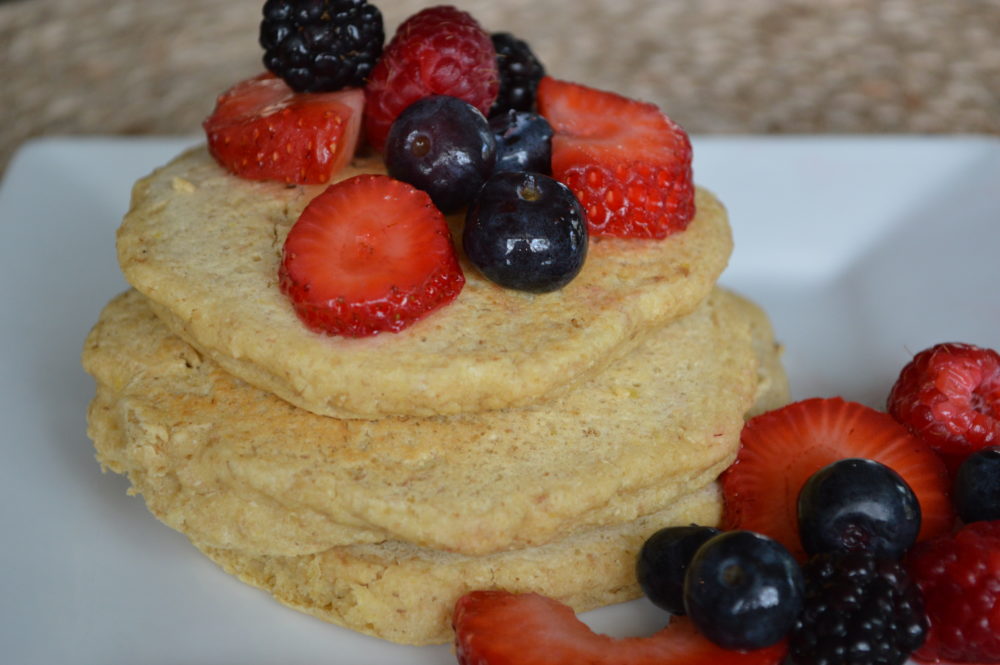
What is it?
When farmers harvest rice, they shuck the grains of its outer husk, which are inedible. What is left after this process is brown rice. If the farmer also removes the germ and bran from the rice grain, he or she is left with white rice. Brown rice flour is made from the first type of rice, and white rice flour is produced from the latter. Whether it is brown or white, each type can be ground into rice flour. This is a great base for gluten-free baking.
Best for: All kinds of gluten-free baking. Can also be used as a thickener in soups, stews, fillings, etc.
How to substitute: Swap it 1:1 for glutenous flour or any other gluten-free flour. Use up to half of brown rice flour in gluten-free flour mixes.
Recipe to Try: Yummy Gluten-Free Pancakes
What About Arsenic in Rice Flour?
Arsenic is a heavy metal found naturally in water and soil, and was once commonly used as a poison. It is carcinogenic, and makes its way into rice because rice fields are flooded, giving the grain more time to absorb it.
Studies on rice show that most varieties of rice are contaminated with arsenic, and some products – especially rice products for babies and young children – have arsenic levels that are considered concerning.
Arsenic in rice is something to be mindful of, but there are a few ways to mitigate the potential risk:
- Rotate through different gluten-free flours, so you’re limiting exposure and not eating rice (or other rice products and rice-based baked goods) daily or multiple times a day.
- Basmati rice is lower in arsenic than other varieties.
- There are certain rinsing and cooking methods for rice that massively lower the amount of arsenic.
Learn more about how to reduce arsenic in rice in our Guide to Cooking Beans and Grains.
Sorghum Flour
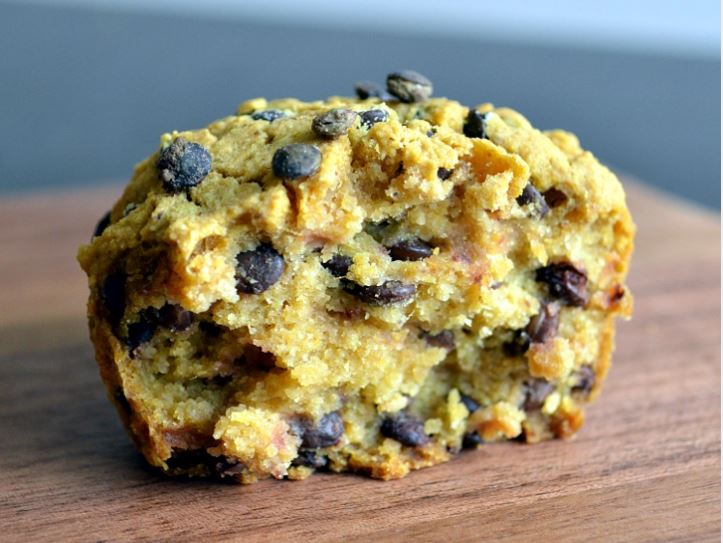
What is it?
Sorghum flour is closest in texture and taste to traditional wheat flour of any of the gluten-free flours. In a few cases, it works as a direct substitution for wheat flour, such as in pancakes. It’s also high in antioxidants.
Best for: Muffins, breads, pancakes, crepes, cookies
How to substitute: Swap it 1:1 for glutenous flour or any other gluten-free flour. Use up to half of sorghum flour in gluten-free flour mixes.
Recipe to Try: Butternut Squash + Lentil Muffins
Tapioca Flour
What is it?
What we in the West call tapioca comes from a plant originally from Asia known as cassava (in South America, it is known as manioc). When the root has been dried, it is ground into white flour. Tapioca flour is also known as tapioca starch. Its starchiness makes it an excellent gluten-free flour, but it must be used in combination with other flours to make great baked goods.
Best for: Mixing into gluten-free flour blends. Can also be used as a thickener in soups, stews and fillings.
How to substitute: Substitute tapioca flour 1:1 in place of corn or potato starch. When using it in baking, aim to have no more than 20% in your gluten-free flour mix.
Recipe to Try: Gluten-Free Paleo Biscuits
Teff Flour
What is it?
The tiny seeds of teff make a fascinating porridge. Dark brown as molasses, with a slight taste of chocolate, teff porridge will fill you up in the mornings. As a flour, teff is nearly miraculous. The fine flour — ground from the tiny seeds — almost dissolves in baking, giving it a slightly gelatinous quality. It binds the baked goods in a somewhat similar fashion to gluten.
Best for: Waffles, banana bread, cookies, muffins
How to substitute: Substitute 1:1 for other gluten-free flours. When making a flatbread like injera, you can use 100% teff. Other times, you may want to use up to 25% teff in your gluten-free flour mixes.
Recipe to Try: Ethiopian Injera
Xanthan Gum and Guar Gum
What is it?
Xanthan gum is used in gluten-free baked goods, toothpaste, salad dressings and frozen foods as a stabilizer. It binds everything together in a uniform consistency. Only a tiny amount (1/2 teaspoon or less) is enough to bind the dough to make cookies and pie crusts.
Guar gum is made from dried and ground seeds of the guar plant, which grows in India and Pakistan. It’s often found in many processed foods such as commercial ice creams and puddings. In small amounts, guar gum can be a somewhat effective binder, mimicking some of the effects of gluten.
Best for: Gums have a tendency to irritate the digestive system. These are often best avoided for this reason.
More Alternative Flours
In this guide, we featured gluten-free flour options that tend to be accessible and available at a lot of grocery stores. With the rise of certain therapeutic diets, there are even more specialty options now to experiment with.
It can be trickier to swap some of these flours into wheat flour recipes or gluten-free flour recipes, so it’s best to try a tested recipe that has been designed to use them.
Learn:
- How to Use Cassava Flour
- How to Use Tigernut Flour
- How to Use Green Banana Flour
- How to Use Lupin Flour
Ready to dive into gluten-free baking?
Grab our updated Gluten-Free Flour Guide! In it you will find all these gluten-free flours (and more) plus we share our go-to gluten-free flour blend recipe, as well as a few extra gluten-free recipes to get you started.
Free Resource Library
Enjoy more than 40 downloadable guides, recipes, and resources.
















